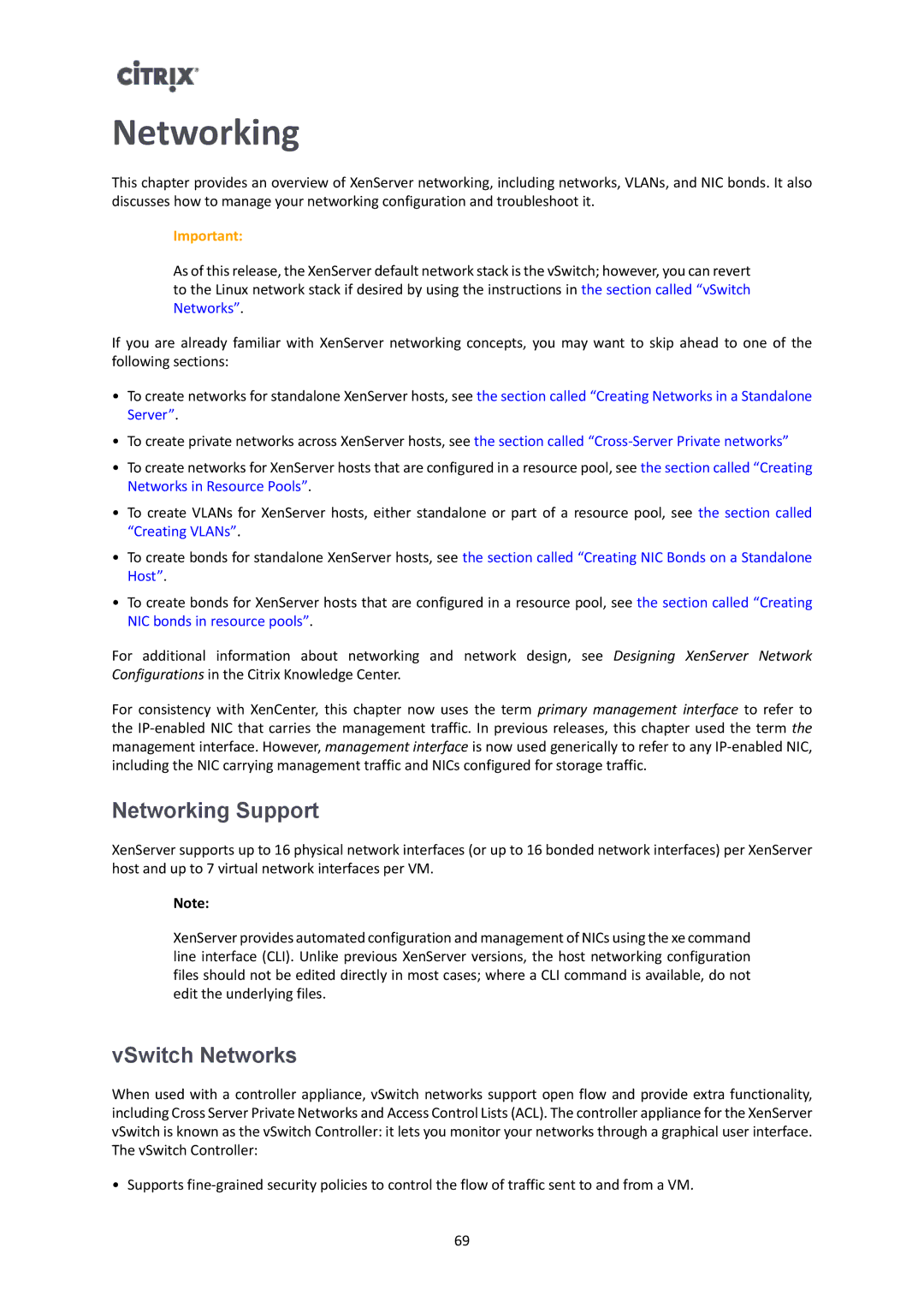Networking
This chapter provides an overview of XenServer networking, including networks, VLANs, and NIC bonds. It also discusses how to manage your networking configuration and troubleshoot it.
Important:
As of this release, the XenServer default network stack is the vSwitch; however, you can revert to the Linux network stack if desired by using the instructions in the section called “vSwitch Networks”.
If you are already familiar with XenServer networking concepts, you may want to skip ahead to one of the following sections:
•To create networks for standalone XenServer hosts, see the section called “Creating Networks in a Standalone Server”.
•To create private networks across XenServer hosts, see the section called
•To create networks for XenServer hosts that are configured in a resource pool, see the section called “Creating Networks in Resource Pools”.
•To create VLANs for XenServer hosts, either standalone or part of a resource pool, see the section called “Creating VLANs”.
•To create bonds for standalone XenServer hosts, see the section called “Creating NIC Bonds on a Standalone Host”.
•To create bonds for XenServer hosts that are configured in a resource pool, see the section called “Creating NIC bonds in resource pools”.
For additional information about networking and network design, see Designing XenServer Network Configurations in the Citrix Knowledge Center.
For consistency with XenCenter, this chapter now uses the term primary management interface to refer to the
Networking Support
XenServer supports up to 16 physical network interfaces (or up to 16 bonded network interfaces) per XenServer host and up to 7 virtual network interfaces per VM.
Note:
XenServer provides automated configuration and management of NICs using the xe command line interface (CLI). Unlike previous XenServer versions, the host networking configuration files should not be edited directly in most cases; where a CLI command is available, do not edit the underlying files.
vSwitch Networks
When used with a controller appliance, vSwitch networks support open flow and provide extra functionality, including Cross Server Private Networks and Access Control Lists (ACL). The controller appliance for the XenServer vSwitch is known as the vSwitch Controller: it lets you monitor your networks through a graphical user interface. The vSwitch Controller:
• Supports
69
